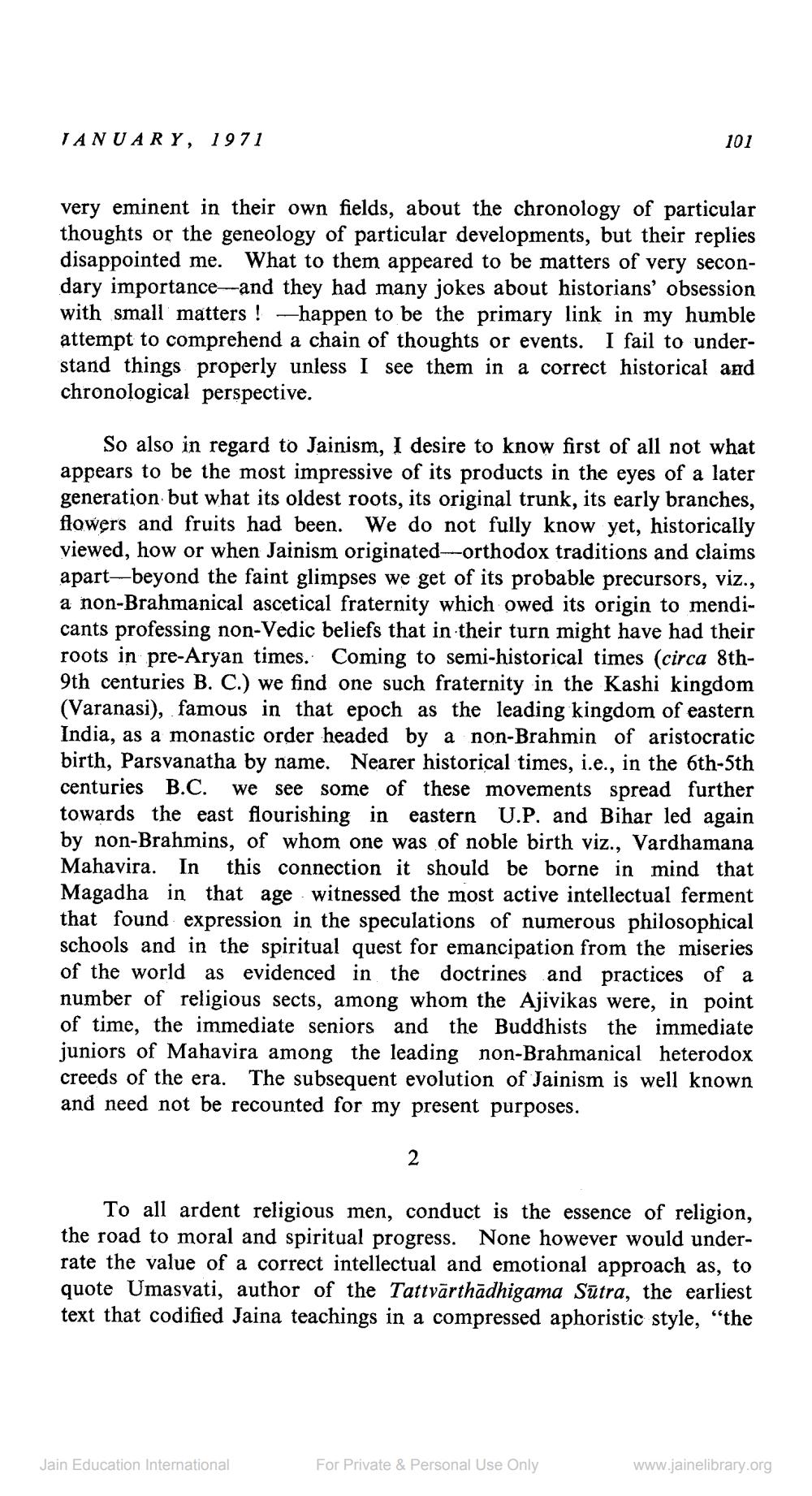________________
JANUARY, 1971
very eminent in their own fields, about the chronology of particular thoughts or the geneology of particular developments, but their replies disappointed me. What to them appeared to be matters of very secondary importance-and they had many jokes about historians' obsession with small matters! -happen to be the primary link in my humble attempt to comprehend a chain of thoughts or events. I fail to understand things properly unless I see them in a correct historical and chronological perspective.
So also in regard to Jainism, I desire to know first of all not what appears to be the most impressive of its products in the eyes of a later generation but what its oldest roots, its original trunk, its early branches, flowers and fruits had been. We do not fully know yet, historically viewed, how or when Jainism originated-orthodox traditions and claims apart beyond the faint glimpses we get of its probable precursors, viz., a non-Brahmanical ascetical fraternity which owed its origin to mendicants professing non-Vedic beliefs that in their turn might have had their roots in pre-Aryan times. Coming to semi-historical times (circa 8th9th centuries B. C.) we find one such fraternity in the Kashi kingdom (Varanasi), famous in that epoch as the leading kingdom of eastern India, as a monastic order headed by a non-Brahmin of aristocratic birth, Parsvanatha by name. Nearer historical times, i.e., in the 6th-5th centuries B.C. we see some of these movements spread further towards the east flourishing in eastern U.P. and Bihar led again by non-Brahmins, of whom one was of noble birth viz., Vardhamana Mahavira. In this connection it should be borne in mind that Magadha in that age witnessed the most active intellectual ferment that found expression in the speculations of numerous philosophical schools and in the spiritual quest for emancipation from the miseries of the world as evidenced in the doctrines and practices of a number of religious sects, among whom the Ajivikas were, in point of time, the immediate seniors and the Buddhists the immediate juniors of Mahavira among the leading non-Brahmanical heterodox creeds of the era. The subsequent evolution of Jainism is well known and need not be recounted for my present purposes.
101
2
Jain Education International
To all ardent religious men, conduct is the essence of religion, the road to moral and spiritual progress. None however would underrate the value of a correct intellectual and emotional approach as, to quote Umasvati, author of the Tattvärthadhigama Sutra, the earliest text that codified Jaina teachings in a compressed aphoristic style, "the
For Private & Personal Use Only
www.jainelibrary.org




